Beyond mountains and temples, Nepal holds a treasure of culinary culture. Nepal have really interesting food cusines. Each region offers something for tasting. From the hills to the plains, each dish conveys a story. Good local spices ensure every bite tastes great and remains memorable. Travelers appreciate everything from smile-inducing foods that are fresh, filling, and wholesome. Most kitchens today still function based on traditional recipes. People from all across the world cherish Nepal’s best food cuisines. Nepalese food reflects culture, tradition, and society. Meals meant to bring families and neighbors together. Cooking methods are historically transferred down from one generation to another. In this blog, we will explore top 10 Food Cuisines of Nepal.
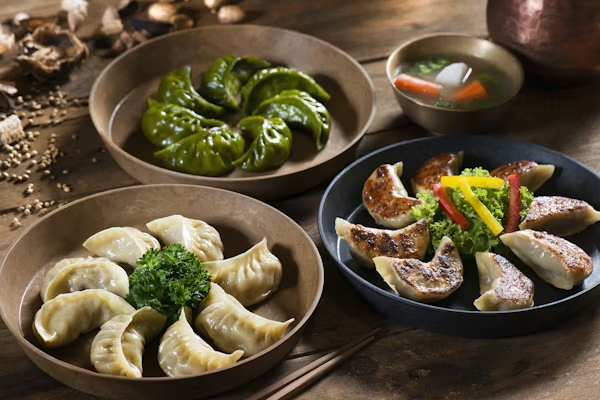
Most dishes make use of local and seasonal ingredients. This makes the food healthy and sustainable. Wherever in Nepal, every bite connects one to the soil of the land. Keeping it simple with ingredients is the charm. Both locals and tourists find comfort in taste and experience. Now with more and more attention worldwide, more travelers seek true food adventures.
Local plates are now hip to share across social media. This sparks interest among epicureans about dal bhat and momos. The top two cuisines in Nepal offer much variety and depth. The flavors vary from hot to mild, Mesmerizing ones. It is lucky to have awards from many restaurants and homestays. This is going to be the year when you taste Nepal like never before!
Top 10 Food Cuisines of Nepal
Nepal offers a wide range of flavorful dishes worth exploring. Each cuisine tells a different story from its region. The use of local ingredients gives every dish a fresh taste. From the mountains to the lowlands, food varies in style and flavor. The top food cuisines of Nepal combine taste, tradition, and nutrition. These meals are not just delicious but also deeply cultural. Many dishes are simple yet packed with bold spices. Locals prepare them with pride and care. If you visit Nepal, trying these foods should be your top priority. Let’s explore the top 10 food cuisines of Nepal you should try in 2025.
1. Dal Bhat : Popular Food Cuisine of Nepal
Dal Bhat stands as the national dish of Nepal. People across the country eat it daily. They prepare it with steamed rice and lentil soup. Locals also add vegetables, pickles, and sometimes meat. This meal provides energy and keeps people full for hours. People cook it in both urban homes and rural villages. Each region adds its unique twist to the recipe.
Dal Bhat remains among the top food cuisines of Nepal. The taste of Dal Bhat stays simple but rich. Cooks add garlic, turmeric, cumin, and ginger for deep flavor. They boil lentils until smooth and creamy. Then fry fresh vegetables in mustard oil. The dish is served with hot pickles to add a spicy punch. They place the meal on a large metal plate called a “thali.” Most people eat it with their hands in true Nepali style. This tradition creates a warm and authentic experience.
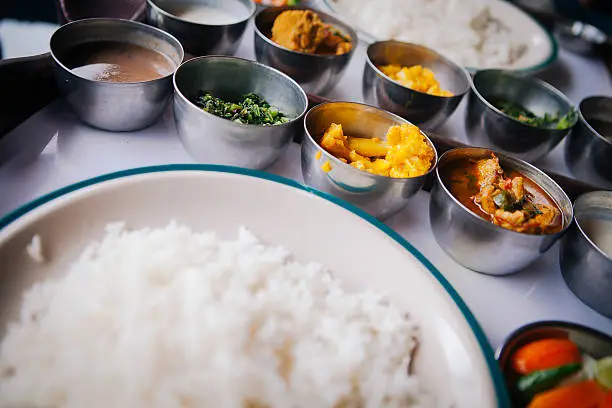
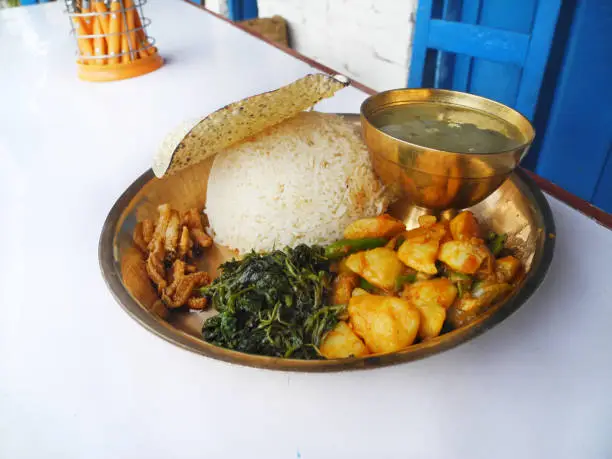
Few households make the dish differently; spinach, pumpkin, and radishes might go into the sautéed vegetables. Chicken curry or fried fish might be served on the side. Travelers appreciate that the dish is so much adaptable. Street stalls, home kitchens, and fine dining establishments serve it. This speaks to its importance in the life of Nepalis. You can have it for lunch or dinner every day. Dal Bhat truly outshines the top food cuisines of Nepal
2. Momo : Popular Food Cuisine of Nepal
Momos are the most loved snack in Nepal. These dumplings come with various fillings. Chicken, buffalo, pork, or vegetables are common choices. The wrappers are thin and soft when steamed. A spicy tomato sauce always comes on the side. You can find momos in homes, restaurants, or roadside stalls. They are cheap, tasty, and easy to eat. The top food cuisines of Nepal always include momos. Making momos is a fun and social process. Families gather to fill and fold each one. Every fold shows care and skill from the cook. Cooks steam or fry the momos until they’re ready. Steamed momos are soft and juicy inside.

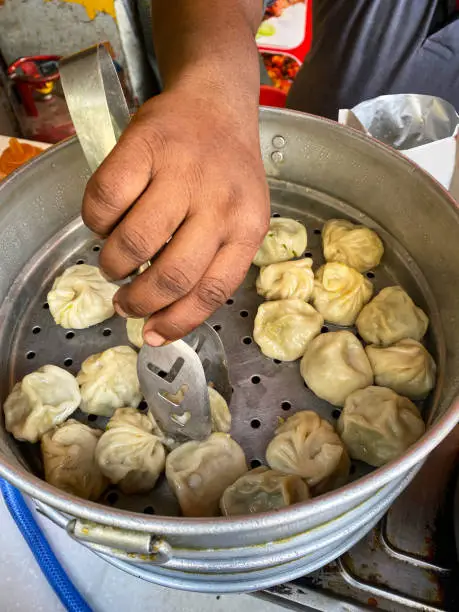
Fried ones are crispy with a golden shell. Both types taste amazing with the dipping sauce. Eating momos becomes a joyful habit for many. Momos now come in creative versions too. Some places offer cheese, paneer, or even chocolate momos. Street vendors compete to create new momo flavors. You can try jhol momos served in spicy soup. Some restaurants even serve open momo platters. These mix different types on one plate. Tourists and locals both love to explore new varieties. Momos easily earn their place among the top food cuisines of Nepal.
3. Newari Cuisine : Food Cuisine of Nepal with Cultural Touch
Newari cuisine comes from the Newar community in the Kathmandu Valley. People know it for bold spices, variety, and deep cultural roots. The dishes carry stories of celebrations, rituals, and everyday life. Locals use beaten rice, buffalo meat, lentils, and lots of native herbs. Every Newari meal includes a range of small variety of items served together. The balance between spice, crunch, and texture is perfect. Newars take pride in preparing food with care and respect. Guests feel honored when served a full Newari set. The top food cuisines of Nepal always include these rich and traditional dishes. Newari food brings both taste and heritage to the table.
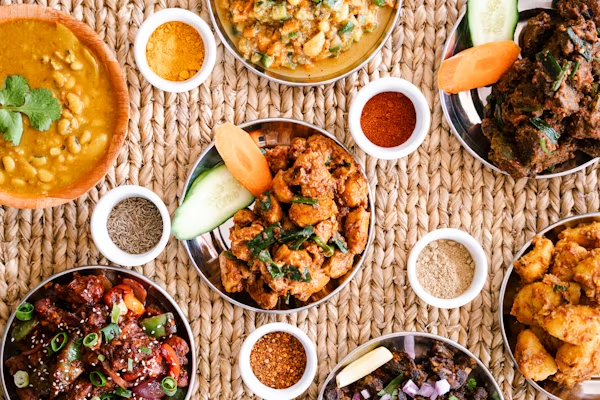
The Legend of Samay Baji
One of the most popular items is Samay Baji. It includes beaten rice, black-eyed beans, boiled egg, and spiced meat. People also enjoy dishes like Choila, a grilled meat mixed with spices. Another favorite is Bara, a savory lentil pancake fried until golden. Yomari, a sweet steamed dumpling with sesame filling, delights dessert lovers. Cooks use mustard oil and local spices to add bold flavors. They serve these items during festivals and family gatherings. Locals prepare these dishes with centuries-old techniques. The texture, flavor, and variety make every bite exciting. These dishes reflect the deep culinary identity of the Newar people.
Food holds a sacred place in Newar traditions. They serve specific dishes for rituals and life events. Festivals like Indra Jatra and Yomari Punhi highlight their rich food culture. Families pass down recipes through generations. Children learn to cook these dishes during family feasts and community gatherings. This keeps their traditions alive and respected. Modern restaurants in Kathmandu now serve full Newari sets. Tourists can enjoy these flavors in a traditional setup. The top food cuisines of Nepal cannot miss this ancient and flavorful variety. Newari cuisine offers just more than food—it offers an experience that is ever lasting.

4. Sel Roti : Popular Food Cuisine of Nepal
Sel Roti is a one of the most loved traditional snack in Nepal. People often make it during major festivals like Dashain and Tihar. It looks like a donut but it just tastes different. Sel Roti tastes more like crispy rice bread. The batter of Sel Roti includes rice flour, sugar, milk, and sometimes banana. Cooks pour the batter in rings into hot oil and fry it golden brown. The outside turns crispy while the inside stays soft and fluffy. The process of making Sel Roti feels festive and joyful. Families gather to fry them in large batches. They serve it with tea, yogurt, or spicy curry. Sel Roti shines as one of the top food cuisines of Nepal.
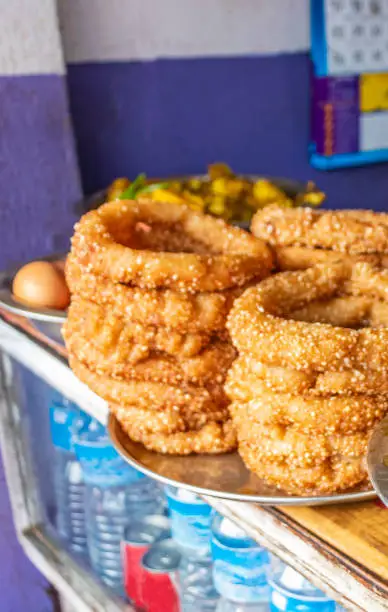
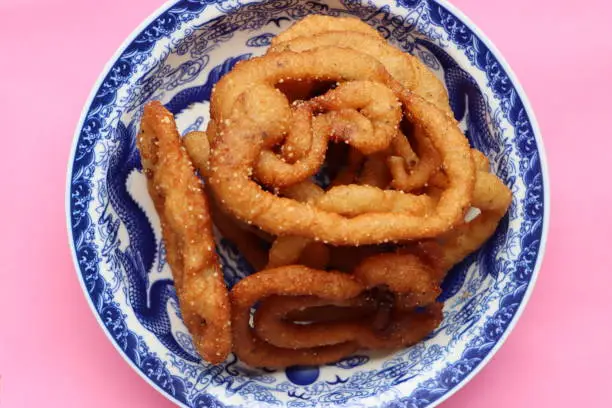
Making Sel Roti takes practice and patience. People soak rice overnight and grind it into fine flour. They mix it with sugar, ghee, milk, and other ingredients. The batter must be just right—not too thick or thin. They carefully pour the batter into the oil in perfect rings. They flip each one for an even golden crust. Everyone waits eagerly to grab a fresh, warm piece. The sweet aroma fills homes and temples during festivals. Each ring of Sel Roti shows skill and love.
Sel Roti represents more than food; it represents Nepali culture. People of all ages enjoy it, from kids to elders. It brings back memories of family and tradition and lots of memories . Street vendors now sell it all year round in busy markets. Cafes even serve modern versions with cheese or chocolate. Still, the original version holds a special place in hearts. Visitors find it both delicious and unique. Its texture and flavor surprise first-time eaters in a good way. It remains a proud highlight of the top food cuisines of Nepal.
5. Gundruk : A National Food of Nepal
Gundruk is a traditional fermented leafy green dish from Nepal. People usually make it using mustard leaves, radish leaves, or cauliflower greens. They dry the leaves in the sun after fermenting them naturally. This gives Gundruk a strong, tangy flavor that’s easy to recognize. Locals cook it into soup or stir-fry it with spices. It tastes earthy and rich when paired with rice or dhido. People across the hills and mountains love this dish. It’s a great source of probiotics and vitamins. Families often preserve it for winter use. Gundruk clearly belongs among the top food cuisines of Nepal.
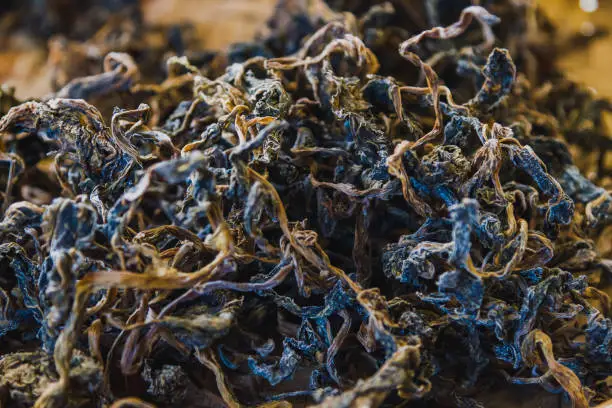

Cooks prepare Gundruk with simple ingredients but bold flavor. They heat oil ,add garlic, chili, and turmeric to start making Gundruk. Then, they stir-fry the Gundruk until it blends with the spices. Some add chopped tomatoes and onions for more depth. Others turn it into a soup with water and spices. Both versions taste comforting and deeply satisfying. The smell alone brings memories of their home and childhood to many Nepalis people. It pairs well with boiled potatoes or roasted soybeans. Its smoky, sour taste adds character to any meal. Gundruk may be humble, but it stands proudly in Nepali kitchens.
Gundruk has cultural value beyond just taste. Villagers gather in groups to dry and store it in large batches. They often hang it from rooftops in baskets made of bamboo. This tradition has stayed alive for generations. It reflects the wisdom of preserving food naturally. Even in cities, people still crave the taste of homemade Gundruk. You can now find it in restaurants that serve authentic Nepali meals. Tourists enjoy learning how it’s made and trying it fresh. This unique dish deserves its place in the top food cuisines of Nepal. Gundruk proves that simple food can be powerful.
6. Thakali Cuisine : Food Cuisine of Nepal with Cultural Touch
Thakali cuisine comes from the Thak Khola region near Mustang. People recognize it for balanced flavor, clean presentation, and rich variety. It blends ingredients from the hills and mountains. A traditional Thakali set includes rice, lentils, pickles, greens, and meat or vegetable curry. The meal also features gundruk soup and buckwheat roti. Cooks serve everything in small portions but with great care. The presentation feels clean and elegant on a steel tray. Each bite feels nourishing and perfectly seasoned. People from all over Nepal enjoy Thakali food. It is firmly part of the top food cuisines of Nepal.
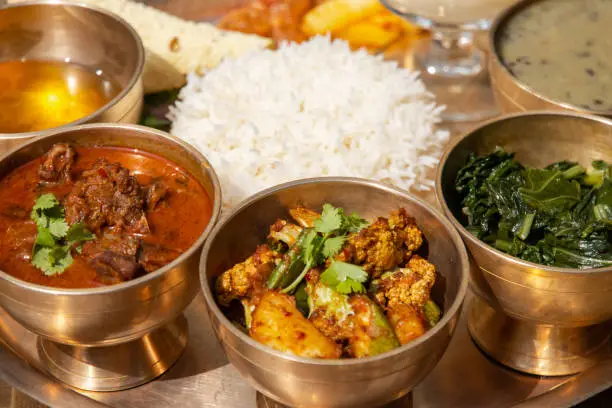
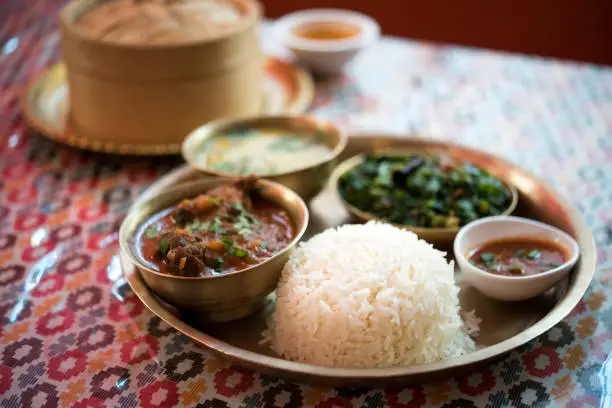
Cooks use Himalayan herbs and local spices in Thakali dishes. They toast spices like fenugreek, cumin, and timur to enhance aroma. The curries taste lighter than regular Nepali ones but full of flavor. They use less oil and rely on slow cooking. Pickles are an essential part of the Thakali plate. Some are tangy with lemon; others are spicy with chili. They also add saag or stir-fried greens on the side. A small bowl of soup usually completes the meal. You feel satisfied without feeling heavy afterward. This clean balance defines Thakali cuisine.
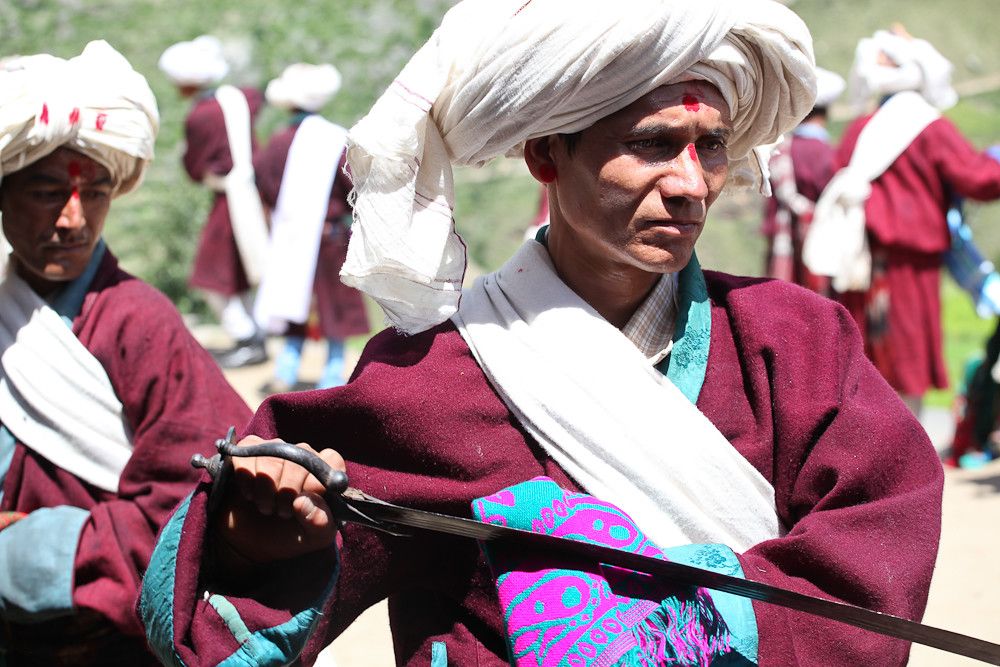
Thakali families have passed down this food tradition for generations. They believe food should heal as well as feed. Restaurants across Nepal now specialize in Thakali sets. Tourists often choose Thakali food for its variety and taste. Even Nepalis from other regions admire its flavor and balance. It combines rural simplicity with refined cooking methods. Some lodges in the Annapurna region offer homemade Thakali meals. Eating it in the mountains adds to the charm. Thakali food honors tradition while fitting modern tastes. It stands proudly among the top food cuisines of Nepal.
7. Sherpa Stew (Thukpa) : Food Cuisine of Nepal with Cultural Touch
Thukpa is a warm noodle soup from the Sherpa people of Nepal. It combines soft wheat noodles with meat and vegetables in a savory broth. Usually, cooks add chicken, yak, or beef to the soup. Fresh ginger, garlic, and chili give the broth a spicy kick. Locals enjoy Thukpa especially during cold mountain days. The noodles soak up the rich flavors perfectly. Many people eat it as a main meal or a hearty snack. Street vendors and homes both serve this comforting dish. Tourists love it for its warmth and taste. Thukpa easily earns a spot in the top food cuisines of Nepal.
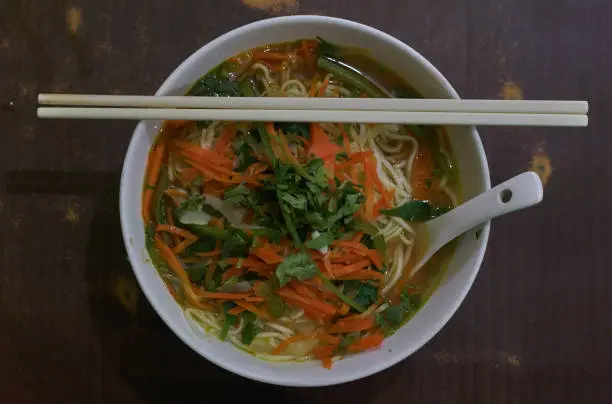
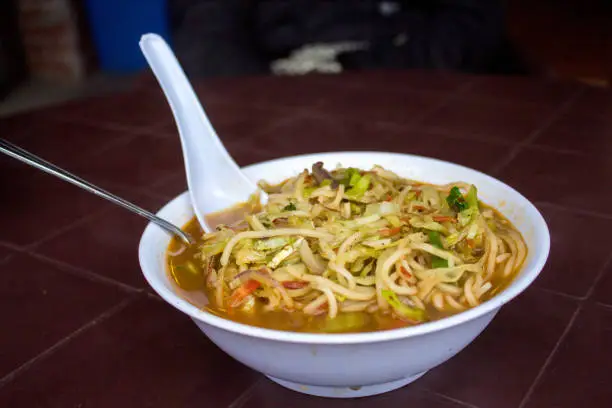
Cooks make Thukpa with fresh ingredients daily. They chop vegetables like carrots, cabbage, and spinach. Meat is simmered slowly to keep it tender and juicy. The broth tastes clean but packed with spices. They add tomatoes for sweetness and chilies for heat. A squeeze of lemon adds brightness before serving. People often garnish it with fresh herbs and scallions. The dish feels healthy and satisfying at once. Eating Thukpa in a mountain lodge feels like a warm hug. It reflects the Sherpa culture’s simple and hearty approach to food.
Thukpa’s popularity grows beyond the Himalayas now. Many restaurants in Kathmandu offer their own versions. Some add noodles made from buckwheat or rice flour. Others serve vegetarian Thukpa with tofu or mushrooms. This variety attracts different kinds of food lovers. Travelers find it an easy introduction to Nepali mountain cuisine. Locals treasure it as comfort food during cold seasons. Sharing a bowl of Thukpa creates a friendly atmosphere. It ranks high among the top food cuisines of Nepal. Thukpa promises both warmth and flavor in every spoon.
8. Aloo Tama : A Perfect Food for Rainy and cold Days
Aloo Tama is a one of the unique Nepali curry made with potatoes and fermented bamboo shoots and sometimes adding raddish. People usually cook it with black-eyed peas or kidney beans. The fermented bamboo adds a tangy, slightly sour flavor to the device that stands out. Locals love this dish for its mix of spicy, sour, and savory tastes, which adds the taste to the dish. Aloo Tama is prepared it with mustard oil, garlic, and fresh chilies. The curry often simmers slowly to blend the flavors deeply. People enjoy it with steamed rice, flatbread and even dhindo. Aloo Tama feels both comforting and refreshing at the same time. It surely ranks among the top food cuisines of Nepal.
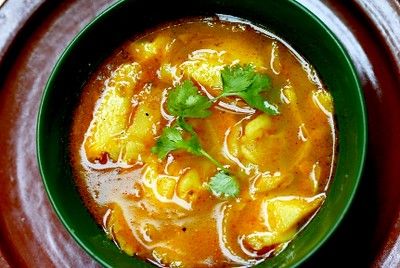

Cooks start by boiling potatoes until tender and soft. They fry onions, garlic, and chilies to build a spicy base. Then they add fermented bamboo shoots and beans to the mix. The curry simmers gently, allowing flavors to meld perfectly. Some families add a touch of turmeric or fenugreek for extra aroma. The sourness of bamboo balances the heat from chilies well. Many people enjoy Aloo Tama year-round, especially during colder months. It gives a warming, hearty feeling with every bite. Its unique taste surprises and delights first-timers.
9. Dhido : A National Food Cuisine of Nepal
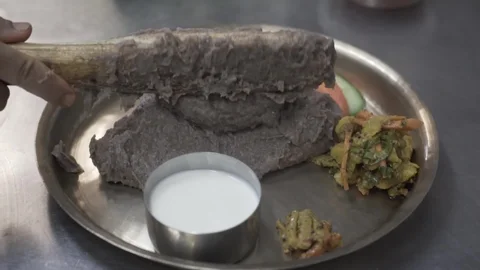
Dhido is a traditional Nepali staple food made without rice or wheat. People prepare it using buckwheat, millet, or corn flour. They stir the flour into boiling water until thick and smooth. The dish forms a sticky, dough-like texture once cooked. Locals eat Dhido with their hands, forming small balls before dipping. It pairs well with lentil soup, pickles, and vegetable or meat curry. The texture feels dense but light on the stomach. Dhido is gluten-free and rich in nutrients. Many mountain communities eat it daily. It proudly holds a spot among the top food cuisines of Nepal.
Making Dhido requires patience and constant stirring. Cooks use a wooden spatula to mix it well. The flour blends into hot water slowly to avoid lumps. Once thick, the mixture pulls away from the pan sides. They add a bit of ghee for extra flavor and smoothness. The final result looks simple but tastes earthy and wholesome. People enjoy it with spinach curry, gundruk soup, or spicy sauces. Restaurants now serve Dhido to promote healthy, traditional eating. Visitors love its rustic feel and unique method of eating. Dhido connects deeply with Nepal’s rural food heritage.
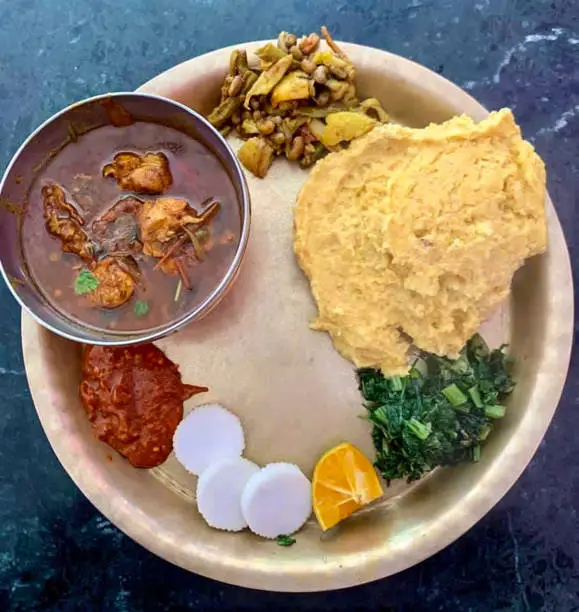
Dhido reflects resilience and sustainability in food. Mountain communities depend on it due to tough farming conditions. They grow buckwheat and millet more easily than rice. This dish shows how locals adapt to nature. Eating Dhido promotes local grains and clean ingredients. It represents balance, tradition, and mindful eating. The simple preparation keeps the flavors natural and rich. More people now choose Dhido for its health benefits. It remains a proud symbol of authentic Nepali food culture. Dhido closes the list of top food cuisines of Nepal with strength.
10. Juju Dhau (King Curd) : A Food of Kings in Nepal
Juju Dhau is a thick, creamy yogurt from Bhaktapur, Nepal. The name means “King of Yogurt” in the Newar language. Locals prepare it using buffalo milk, giving it a rich and smooth texture. They boil the milk, cool it slightly, and mix it with curd starter. Then they pour it into traditional clay pots to set overnight. The clay absorbs moisture, making the curd dense and creamy. Juju Dhau tastes sweet, tangy, and deeply satisfying. People serve it during festivals, weddings, and special ceremonies. It’s a dessert that leaves a lasting impression. Juju Dhau proudly belongs to the top food cuisines of Nepal.
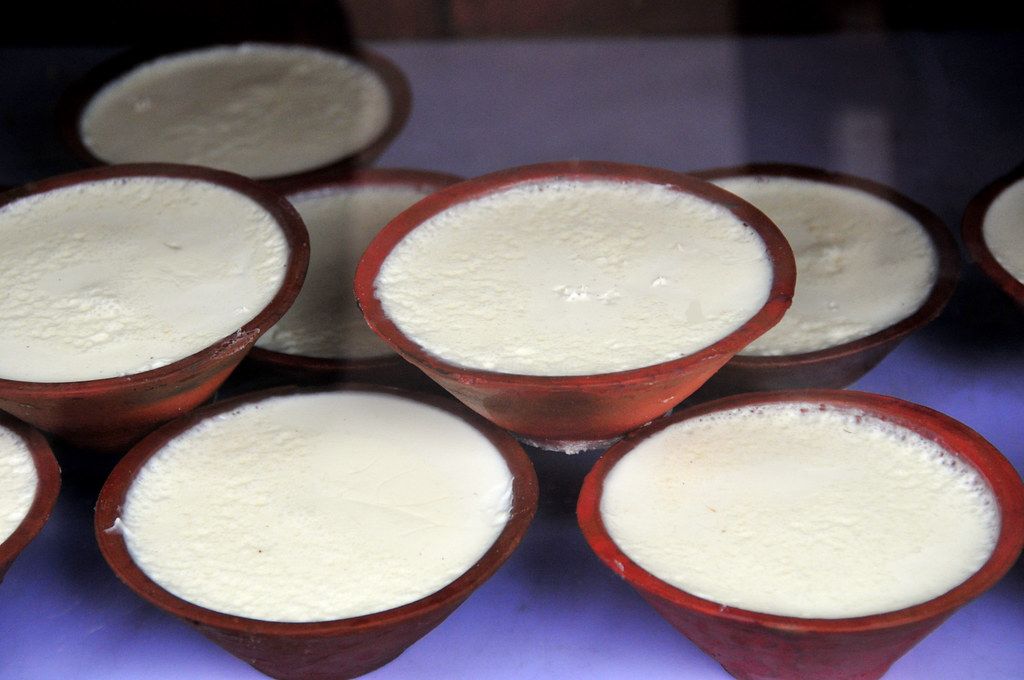
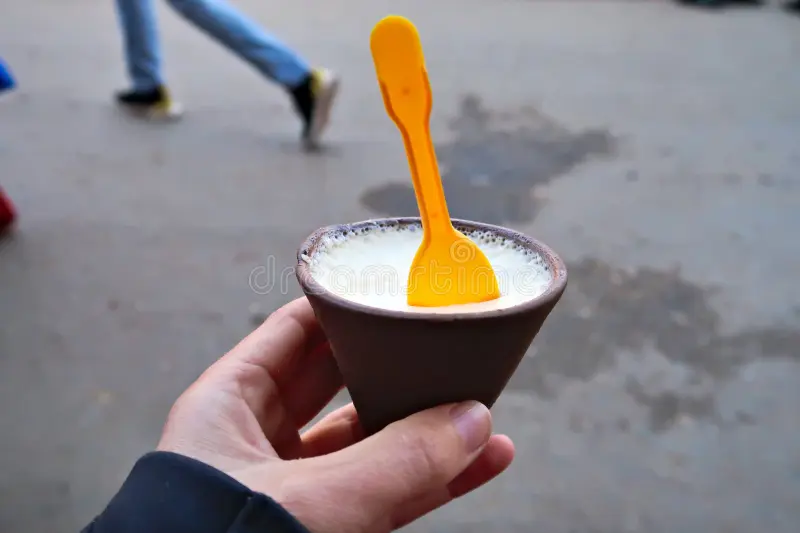
Cooks follow old techniques passed down for generations. They never use machines or shortcuts for the process. The curd sets naturally in a quiet, dark space. The clay pot plays a key role in perfect texture and flavor. Some shops in Bhaktapur have made this their specialty for years. Tourists visit just to taste fresh Juju Dhau on the spot. You can eat it plain or with dry fruits and honey. It feels cooling and rich after a spicy Nepali meal. The first spoon surprises you with its smoothness. The last bite always makes you want more.
Juju Dhau represents both culture and craftsmanship. It shows how a simple dessert can carry heritage and pride. Families in Bhaktapur treat it as a symbol of purity. They offer it to gods during pujas and rituals. Locals take pride in keeping the recipe authentic and natural. No modern yogurt matches its taste and feel. Visitors often take it home in clay pots as souvenirs. Juju Dhau completes the journey through Nepal’s diverse cuisine. It brings sweetness and tradition together in one bite. It stands tall in the list of top food cuisines of Nepal.
Conclusion : Food Cuisines of Nepal
Nepal’s food culture is full of rich flavors, deep traditions, and hearty meals. From mountain stews to fermented greens, each dish tells a story. The top food cuisines of Nepal blend spice, simplicity, and cultural identity. These dishes come from various communities across the country. They use local ingredients, age-old methods, and family secrets. Each meal offers more than just taste—it gives a cultural experience. Whether it’s street food or festival cuisine, Nepal’s food leaves a lasting impression. You discover love, warmth, and connection in every bite.
Trying these cuisines lets you explore Nepal beyond mountains and temples. These dishes welcome you into homes and local kitchens. Every region adds its own twist to these classic meals. The variety keeps food lovers excited and satisfied. Tourists leave with full stomachs and happy memories. Locals feel proud of their culinary roots. The top food cuisines of Nepal deserve global recognition. Let your taste journey begin with these timeless Nepali flavors.


This is a nice blog. I love momo
I like to try dhindo